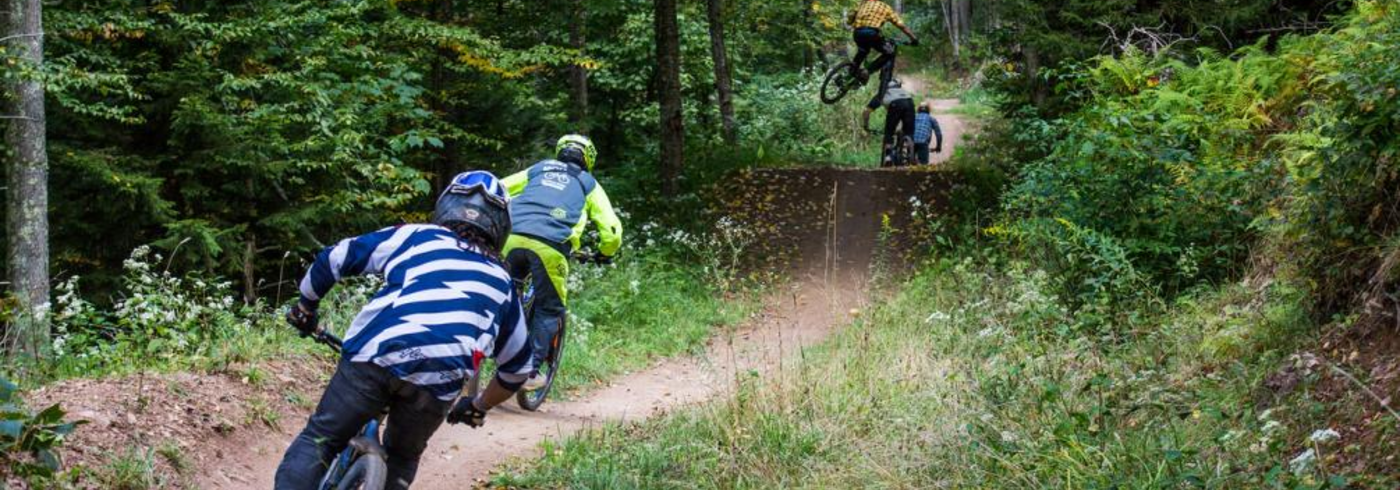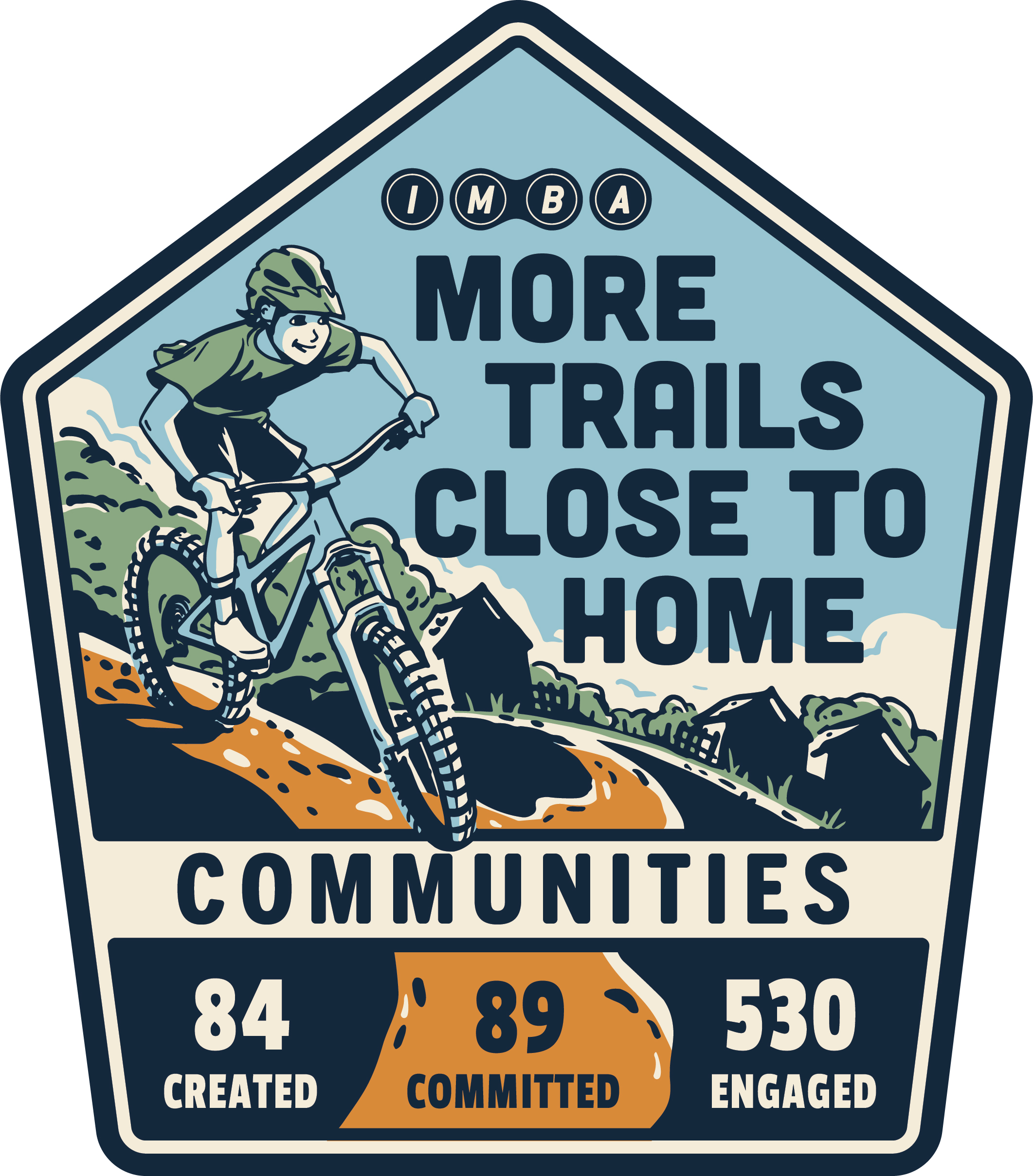IMBA's Position on eMTBs
As a mountain bike advocacy organization, IMBA’s mission is to create, enhance and protect great places to ride mountain bikes. Electric mountain bikes, or eMTBs, are an exciting new technology and Class 1 eMTBs can be a great way for people to share and enjoy trail-based recreation. Access to natural surface trails for traditional non-motorized mountain bikes is critical to the future of our sport. IMBA believes decisions at the local level are the best place to examine the unique characteristics eMTBs possess compared to traditional mountain bikes and determine appropriate shared access for Class 1 eMTBs. IMBA supports trail access for Class 1 eMTBs and supports facilitating shared use on trails as long as such decisions do not cause or lead to lost or impeded access for traditional mountain bikes. IMBA recommends Class 1 eMTBs be managed as an independent category from traditional mountain bikes even when access is shared. IMBA will continue to engage all stakeholders on this issue in an effort to reach outcomes that best suit all users.
Frequently Asked Questions
Why does IMBA update its eMTB policy?
Since 1988, IMBA has worked to advocate for new trails and protect access to natural surface trails for traditional, non-motorized mountain bikes. However, as cycling technologies evolve, it is important for IMBA to continue to examine and/or clarify access policies for new uses, such as Class 1 eMTBs.
As federal, state, and local land managers develop new regulations focused on eMTB’s, IMBA must also take a fresh look at our policies and how they interact and coexist with the changing landscape that are eMTBs.
How does IMBA suggest eMTBs be managed?
IMBA recommends eMTBs be managed as independent trail use categories established between traditional non-motorized mountain bikes and motorized dirt bikes. IMBA encourages land managers to develop individualized regulations for how and where Class 1 eMTBs should have access and incorporate public involvement in determining trail access designations. IMBA anticipates that many mountain bike trails will be considered appropriate for shared use with Class 1 eMTBs.
Why can’t we just say all eMTBs are allowed or not allowed on non-motorized trails?
eMTBs are not defined nor dealt with consistently across land management agencies. Currently, federal land management defines eMTBs as motorized vehicles, with agencies implementing different ways to manage eMTB access on both motorized and non-motorized trails. However once you get beyond the jurisdiction of federal lands it gets more complex. Many local, county and state lands are beginning to adopt policies that allow Class 1 eMTBs on non-motorized trails within their jurisdiction.
What is different about the state and federal policies around e-bikes and eMTBs, and why does it matter?
At the state level, it's still an evolving process. Electric bikes in general have been defined, under individual state transportation codes, as regular bikes in order to avoid having them defined as motor vehicles and regulated as such (registration, licensing, etc.). This has allowed states to recognize them as bikes and logically allow them on bike paths and bike lanes, where other bikes are allowed. However, not all states have adopted these definitions and such definitions and allowances generally do not apply to Department of Natural Resource lands and their respective natural surface trails.
At the federal level, the United State Forest Service (USFS) and Department of Interior (DOI) agencies (ie. NPS, BLM, etc.) have finalized their respective direction and rule-makings for how to define and manage e-bikes and eMTBs. Currently, all e-bikes (eMTBs included) are categorically classified as motor vehicles and are currently allowed to travel on open motorized routes and motorized trails. However, there is a designation process for each agency to allow eMTBs access on traditionally non-motorized trails and that process will include environmental review and public comment and the results and process are unique due to the unique regulatory structures of each agency.
The technical nuances of eMTB policies, regulations and decision making processes all matter because most eMTB advocates and proponents seek trail experiences more similarly associated with traditional bike trails. IMBA believes that working with federal agencies to navigate this process thoughtfully, legally and respectfully is in the best interest of mountain bike advocates and the long-term sustainability of public land trail access.
Will increased access for eMTBs threaten access for traditional mountain bikes?
In general, eMTBs will be a way for many people to enjoy trail-based recreation. The primary potential threat to access is based on the eMTB having a motor. Advocating for traditional non-motorized mountain bike access is IMBA’s core work and we will continue to protect trails mountain bikers love to ride. IMBA recommends eMTBs be managed as a separate use category by class 1, 2 and 3; similar to how numerous states have defined them. This recommendation does not make them synonymous with traditional bikes, rather it simply expands the spectrum for what a bike is—some have electric assist motors, some don’t.
IMBA believes managing eMTBs as a separate use category, even when trail access is shared, will maintain the integrity of the non-motorized classification where traditional mountain bike access has resided, and will prevent access threats for traditional mountain bikes while allowing for eMTB access where appropriate.
Should federal land management agencies simply declare eMTBs allowed on non-motorized trails?
IMBA does not recommend land management agencies automatically allow eMTBs on all traditional trails without proper review, assessment and a public process. On federal lands, that process must comply with NEPA and the travel management planning regulations of each agency.
Will IMBA assist land managers and local advocates as they address access issues for eMTBs?
Yes. As a key stakeholder and leading resource, IMBA encourages land managers to actively address the emerging technology of eMTBs and we will continue to assist both decision makers and our local advocates in navigating this process to reach agreeable, bike-friendly solutions.
Do eMTBs do more damage to trails than traditional mountain bikes?
IMBA conducted a limited scope study in 2015 that concluded Class 1 eMTBs are not likely to have any more impact than traditional mountain bikes or other trail users. Although this question is one of the most common reasons cited as to why Class 1 eMTBs should not have trail access, it is generally seen as a misconception. Increased trail uses and population growth in general will serve as a challenge to resources that we all must contend with, but IMBA believes we must not place the burden on any one user group without supporting scientific analysis. IMBA’s books (Managing Mountain Biking, Trail Solutions and Bike Parks) and other resources can help assist trail builders and management agencies in developing sustainable trail systems that protect natural resources.
IMBA has always been a mountain biking advocacy organization. Does IMBA now also advocate for Class 1 eMTBs?
IMBA’s mission is to create, enhance and protect great places to ride mountain bikes. Nothing has changed there. We believe eMTBs can be a way for people to enjoy trail-based recreation and we look forward to working with agencies, land managers and all stakeholders to achieve the best possible solutions. This will naturally play out through our advocacy and trail building work across the country. Our ideal situation is that together we all navigate this emerging technology so bike access is enhanced and protected broadly, and new opportunities to ride bikes (whether non-motorized or electric) are better than ever.
How might adding eMTBs to traditional trails threaten non-motorized trail grants and trails funded by non-motorized grants?
Many sources of federal, state and local funding for trails relied upon by mountain bike advocates and volunteer stewardship organizations specify that funds be spent on either motorized or non-motorized projects.Only a few allow for both types. It is unclear at this time how past funding for non-motorized projects and future funding would be affected if eMTBs were allowed on such trails.
This is a known issue that demands more policy consideration, research and discussion as agencies work through analysis. Resources that come from federal LWCF and RTP programs are often restricted and divided between motorized and non-motorized categories. IMBA will continue to vigorously defend funding sources relied upon by our local advocates, such as RTP and LWCF. This could result in new sources of funding or diversify funding and/or trail designations. This is an evolving topic.

























